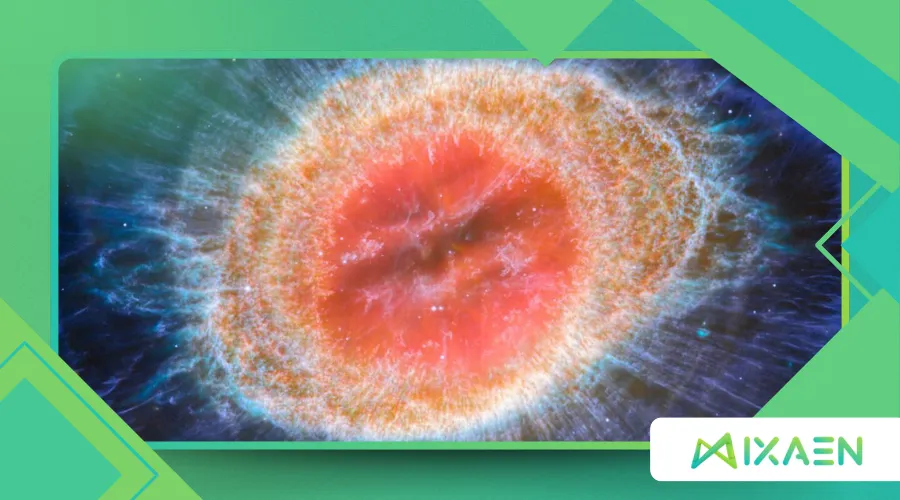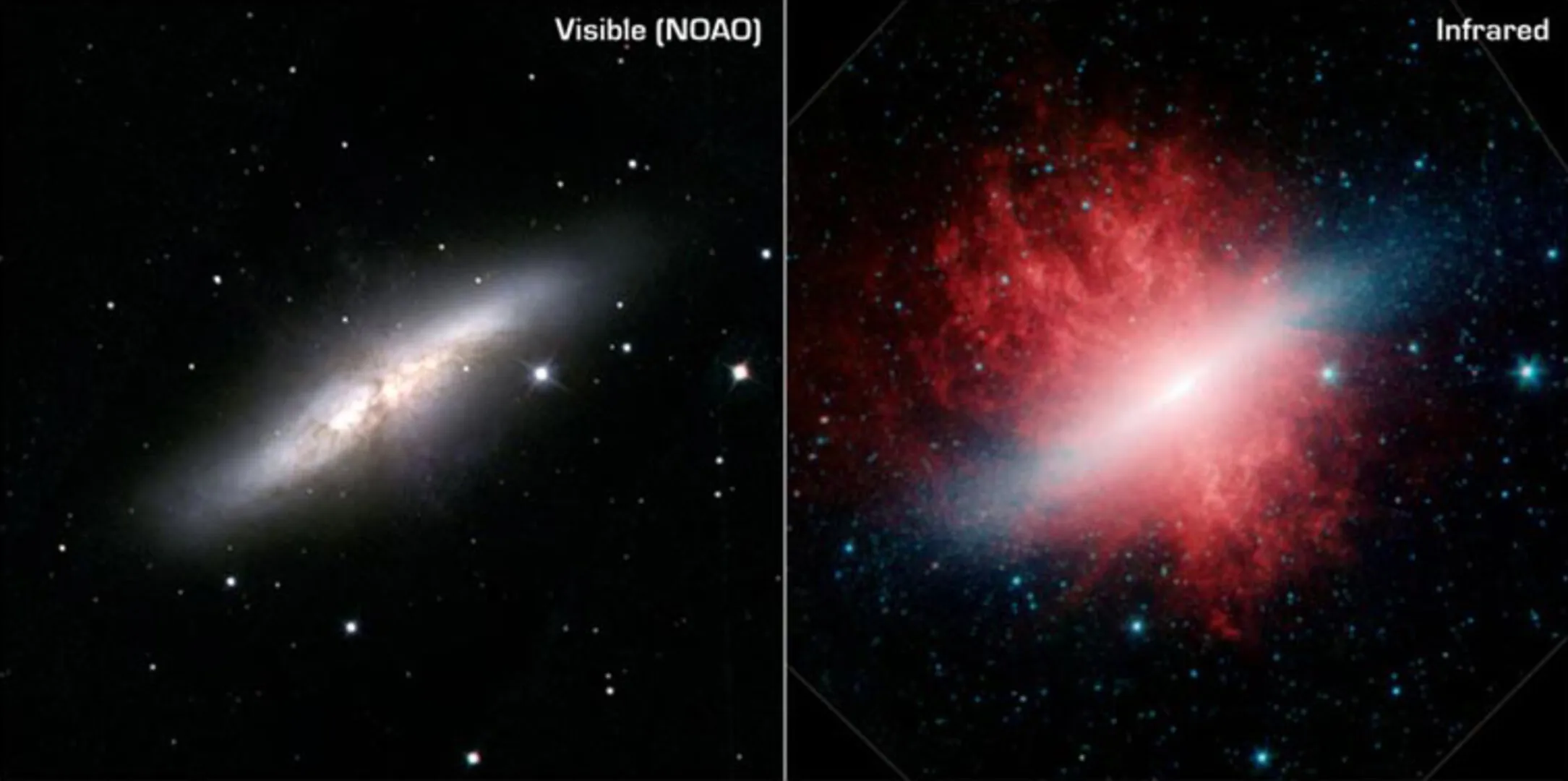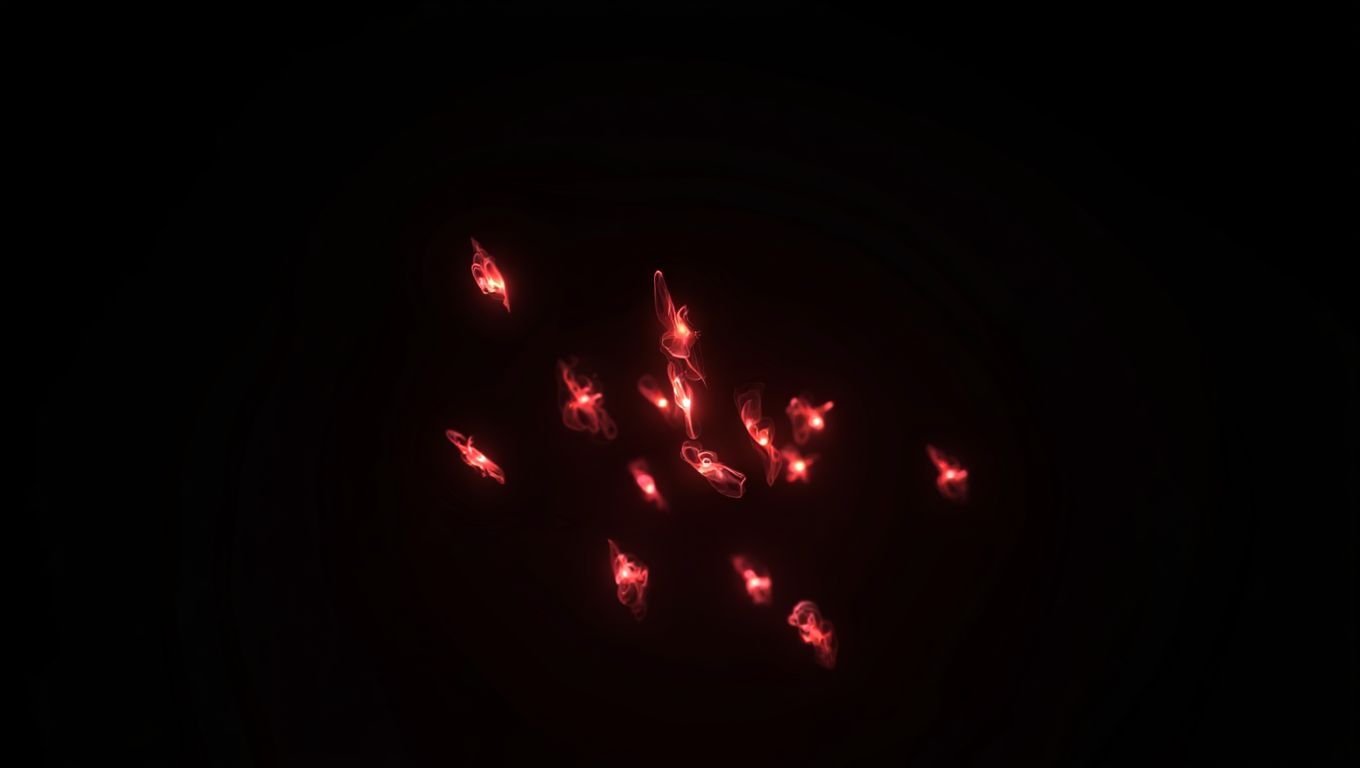The Role of Infrared Light in Discovering Hidden Galaxies

Infrared light, a silent cosmic whisper, unveils galaxies shrouded in dust, revealing secrets of the universe that visible light cannot penetrate.
Anúncios
This invisible radiation, nestled between the red end of the visible spectrum and microwaves, acts like a celestial key, unlocking hidden realms where stars are born and galaxies evolve.
Unlike visible light, which scatters in the dense clouds of interstellar dust, infrared light pierces through, offering astronomers a clearer view of the universe’s obscured corners.
Why do these hidden galaxies matter?
They hold clues to the cosmos’s history, star formation, and even the mysterious forces shaping galactic evolution.
The discovery of these elusive galaxies reshapes our understanding of the universe’s structure.
Imagine a library where half the books are written in invisible ink—only by using the right tool can you read them.
Infrared light is that tool, enabling astronomers to peer through cosmic veils and uncover galaxies that would otherwise remain unseen.
This article explores how this radiant phenomenon drives groundbreaking discoveries, from unveiling star-forming regions to mapping the universe’s distant past, with a nod to cutting-edge technology and recent findings.
Moreover, the increasing capabilities of infrared telescopes are revolutionizing our understanding of galaxy formation and evolution.
The future holds exciting possibilities as we continue to explore the universe through this unique lens.
Piercing the Cosmic Veil
Galaxies cloaked in dust are like shy performers hiding behind a curtain.
Visible light, energetic and direct, bounces off dust particles, leaving astronomers blind to what lies beyond.
Infrared light, however, with its longer wavelengths, slips through these barriers, revealing vibrant galactic cores and star-forming nurseries.
This ability stems from its lower energy, which allows it to bypass the scattering effects of dust grains, much like how fog obscures a flashlight but not a foghorn’s sound.
Consider the galaxy NGC 6946, nicknamed the Fireworks Galaxy.
In visible light, it appears as a bright spiral, but its dusty core hides intense star formation.
Using infrared observations from NASA’s Spitzer Space Telescope, astronomers uncovered a frenzy of young stars, invisible to optical telescopes, forming at a rate of about 100 solar masses per year.
This example underscores how infrared light transforms our perception of galactic activity, revealing processes that shape the cosmos.
Key Contributions of Infrared Telescopes
| Telescope | Wavelength Range (μm) | Key Contribution |
|---|---|---|
| Spitzer Space Telescope | 3.6–160 | Revealed star-forming regions in dusty galaxies |
| James Webb Space Telescope | 0.6–28.3 | Captured early galaxies with unprecedented clarity |
Additionally, the advancements in infrared technology allow for more detailed observations, enhancing our understanding of galactic dynamics.
As we refine our observational tools, the mysteries of the universe continue to unfold.
Mapping the Universe’s Distant Past
The early universe, a chaotic cauldron of forming galaxies, lies billions of light-years away.
Light from these distant objects, stretched by cosmic expansion, shifts into the infrared spectrum—a phenomenon called redshift.
By capturing this light, astronomers can peer back in time, studying galaxies as they were when the universe was young.
Infrared light thus serves as a time machine, offering glimpses of the cosmos’s infancy.
In 2023, the James Webb Space Telescope (JWST) made headlines by detecting galaxies at redshift z~13, dating back to just 300 million years after the Big Bang.
These findings, published in Nature Astronomy, confirmed that infrared light is indispensable for studying the universe’s formative years.
Without it, these ancient galaxies—dim and dust-enshrouded—would remain beyond our reach.
The statistic is staggering: JWST’s infrared capabilities have identified over 1,000 candidate galaxies from the universe’s first billion years, tripling previous counts.
Furthermore, these discoveries challenge our understanding of galaxy formation and evolution during the universe’s early epochs.
Each new finding contributes to a more complete picture of our cosmic history.
+ Rogue Planets: How Scientists Detect These Dark Celestial Bodies
Unveiling Star Formation
Stars are born in dense, dusty clouds, where visible light struggles to escape.
Infrared light, however, reveals these stellar nurseries, exposing the birthplaces of stars and the dynamics of galactic evolution.
It’s akin to using night-vision goggles to spot wildlife in a dark forest—what was once hidden comes alive in vivid detail.
Take the fictional galaxy Aurelia-3, a dusty spiral observed by a future infrared telescope.
Its core, obscured in visible light, glows in infrared, revealing a cluster of protostars.
By analyzing their heat signatures, astronomers estimate their masses and predict their evolution into massive stars or black holes.
This example illustrates how infrared observations decode the life cycles of stars, offering insights into the forces driving galactic growth.

Star Formation Rates by Galaxy Type
| Galaxy Type | Star Formation Rate (Solar Masses/Year) | Infrared Detection Advantage |
|---|---|---|
| Starburst | 100–1,000 | Reveals intense activity hidden by dust |
| Spiral | 1–10 | Detects obscured protostars |
| Elliptical | <1 | Identifies faint residual star formation |
Additionally, understanding star formation in various galaxy types helps astronomers piece together the cosmic puzzle of evolution.
The insights gained from these observations are critical for our grasp of stellar life cycles.
Technology Behind the Discoveries
The power of infrared light lies not just in its physics but in the tools that harness it.
Telescopes like JWST and the upcoming Nancy Grace Roman Space Telescope rely on advanced infrared detectors, cooled to near absolute zero to minimize thermal noise.
These instruments capture faint signals from distant galaxies, transforming raw data into stunning images and spectra.
The JWST’s Near-Infrared Camera (NIRCam), for instance, operates at wavelengths from 0.6 to 5 micrometers, ideal for spotting high-redshift galaxies.
Its Mid-Infrared Instrument (MIRI) extends this range to 28.3 micrometers, perfect for studying dust-enshrouded regions.
These technologies highlight a critical truth: without infrared light, our cosmic map would be incomplete, missing the galaxies that hold the universe’s deepest secrets.
Moreover, ongoing advancements in detector technology promise to enhance our observational capabilities even further.
As we develop new instruments, our understanding of the universe will continue to expand.

++ The Great Attractor: A Cosmic Enigma Pulling the Universe Together
Challenges and Future Horizons
Harnessing infrared light isn’t without hurdles.
Earth’s atmosphere absorbs much of this radiation, forcing astronomers to rely on space-based telescopes, which are costly and complex.
Ground-based observatories, like the Atacama Large Millimeter/submillimeter Array (ALMA), complement these efforts by detecting longer infrared wavelengths, but they face limitations from atmospheric interference.
Looking ahead, missions like the Roman Space Telescope, set to launch in 2027, promise to expand our infrared vision.
Its wide-field imaging will survey vast swaths of the sky, potentially uncovering thousands of hidden galaxies.
Could these discoveries redefine our understanding of cosmic evolution?
The answer lies in the continued pursuit of infrared exploration, pushing the boundaries of what we believe is possible.
Furthermore, collaborations between international space agencies are crucial for maximizing the potential of future missions.
Together, these efforts will pave the way for groundbreaking discoveries in the field of astronomy.
A Broader Cosmic Perspective
Beyond galaxies, infrared light illuminates other cosmic phenomena, from exoplanet atmospheres to supermassive black holes.
Its versatility makes it a cornerstone of modern astronomy, bridging gaps in our knowledge.
By revealing what’s hidden, it challenges assumptions and sparks new questions about the universe’s complexity.
The journey to uncover hidden galaxies is more than a scientific quest—it’s a testament to human curiosity.
Infrared light, with its ability to pierce dust and time, empowers us to rewrite the cosmic narrative.
As we stand on the cusp of new discoveries, this radiant tool reminds us that the universe is far grander than we can see with our eyes alone.
Additionally, the ongoing exploration of infrared light may lead to revolutionary breakthroughs in our understanding of fundamental physics.
The quest for knowledge continues, fueled by the wonders of the universe waiting to be uncovered.
